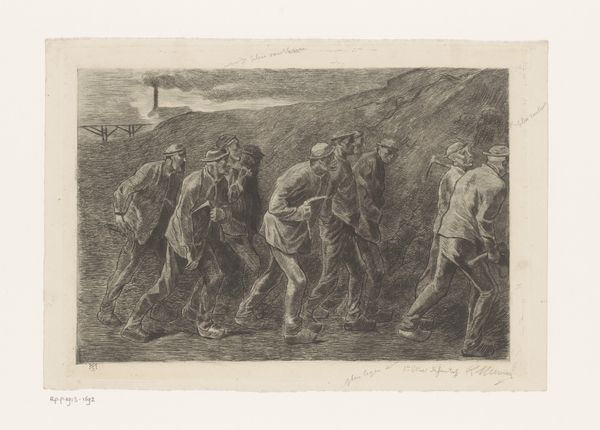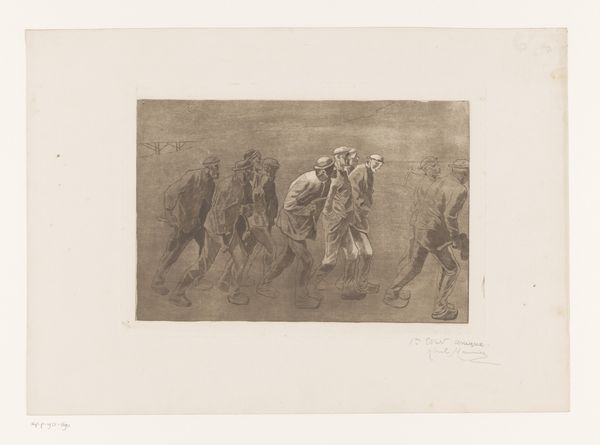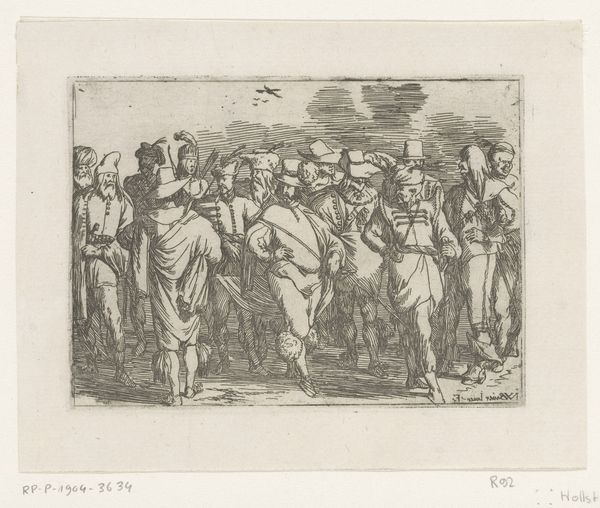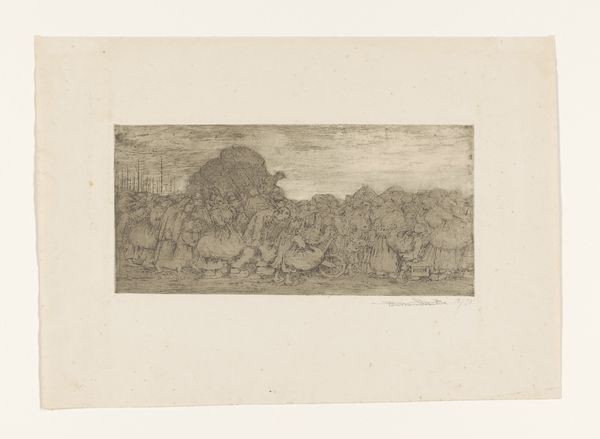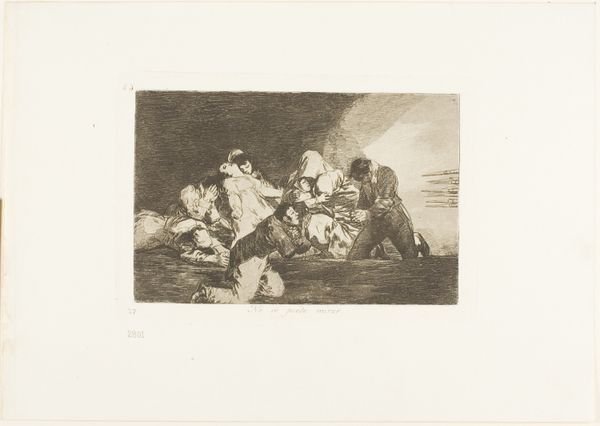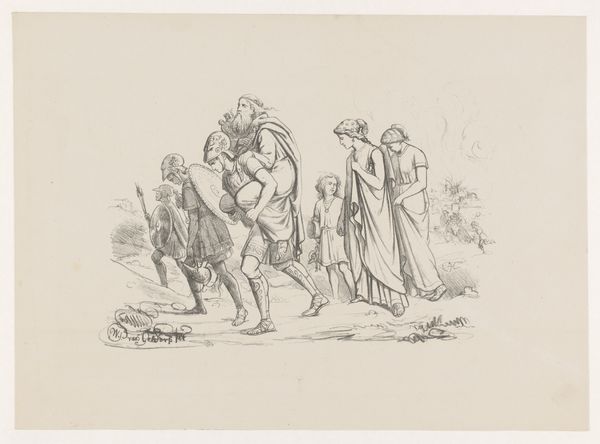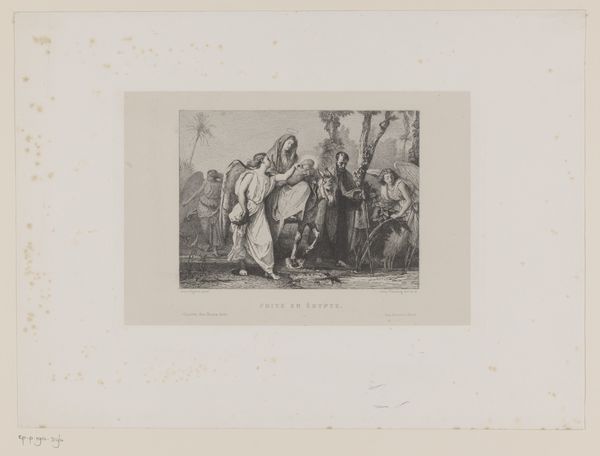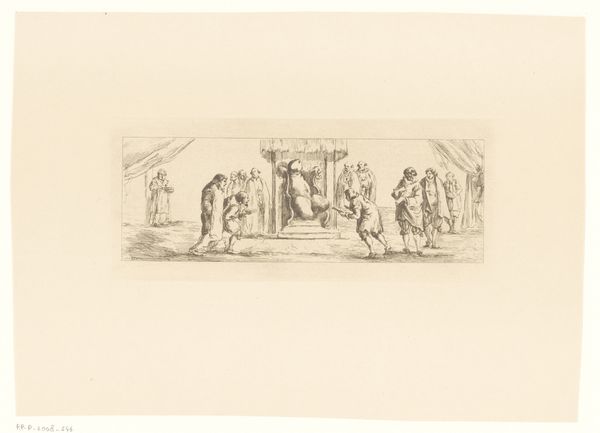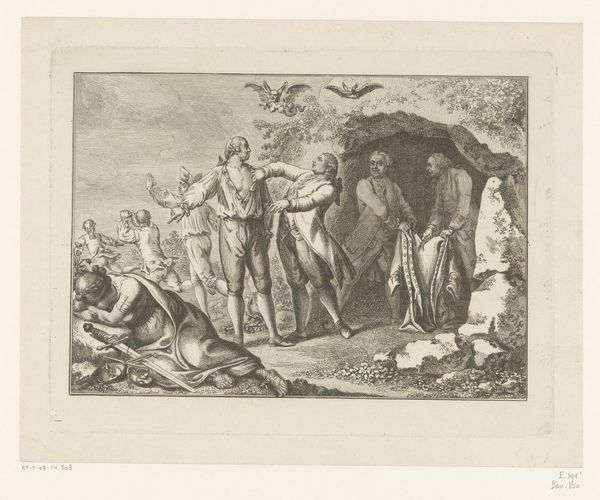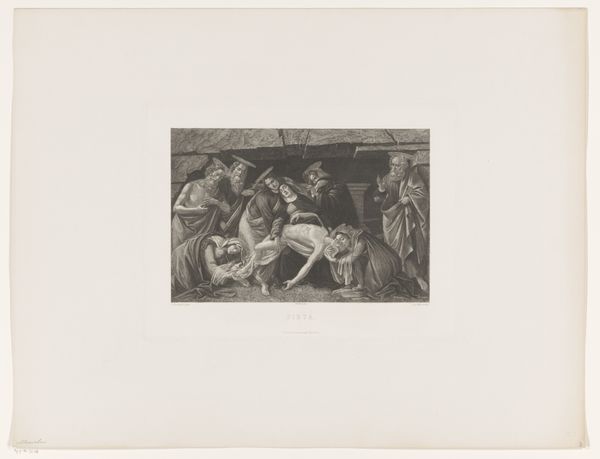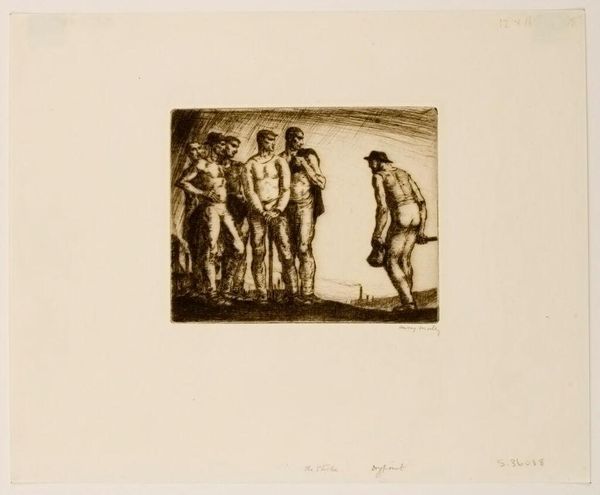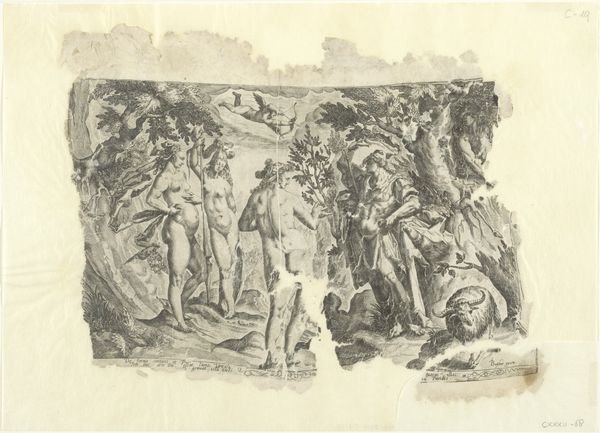
drawing, print, etching, paper
#
drawing
#
16_19th-century
# print
#
etching
#
landscape
#
figuration
#
paper
#
form
#
line
#
genre-painting
#
academic-art
#
naturalism
#
realism
Dimensions: height 208 mm, width 299 mm
Copyright: Rijks Museum: Open Domain
Curator: This etching, made by Karl Meunier sometime between 1874 and 1894, is titled "Ten Miners on Their Way to Work". Editor: The visual texture immediately strikes me. The artist's control of light and shadow is magnificent; it's almost as if the figures emerge from a sepia dream, unified in tone and rhythm. Curator: Yes, the print showcases figures of laborers. What I find remarkable here is the collective identity conveyed. They’re going to work in line. It becomes an act of solidarity. The artist memorializes their everyday struggles and dignity. Editor: That repetition you mention also establishes a very potent structural aspect to the composition. The figures and their stooped postures form this sort of relentless horizontal line. But notice how the plume of smoke mimics their forward direction as it merges into the overcast sky above. It is a formal connection as it signifies their lives. Curator: Certainly. I think it invokes a kind of collective consciousness. A continuity with those preceding, and those to follow, on similar journeys. The image isn’t simply about work; it speaks of generations yoked to an industry. They walk under the sky—a shared sky. This imagery evokes empathy. It acts as a potent commentary on the Industrial Revolution. Editor: Agreed. Moreover, Meunier seems to embrace simplification here to heighten meaning. The simplification directs our focus. We cannot only study them objectively as figures within the print’s physical borders, but we confront our preconceptions too. This etching serves not only as art but as social documentation as well. Curator: Precisely! That capacity to reflect, to embed these human dramas within historical currents...It transcends mere documentation, venturing into the symbolic landscape of cultural memory. Editor: Indeed, analyzing the visual elements shows how the symbolic weight shapes a compelling experience beyond subject and meaning. Curator: In conclusion, Meunier uses naturalism and realism to make a symbolic statement on the human condition. It speaks of labor's heavy toil in 19th century Belgium. Editor: And from a formal perspective, its subdued tonal range contributes powerfully to the image’s gravity and memorable simplicity.
Comments
No comments
Be the first to comment and join the conversation on the ultimate creative platform.
